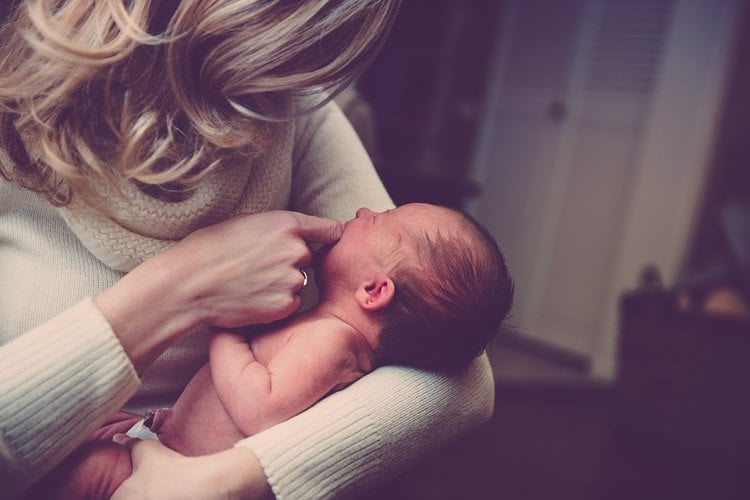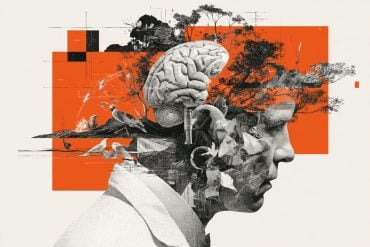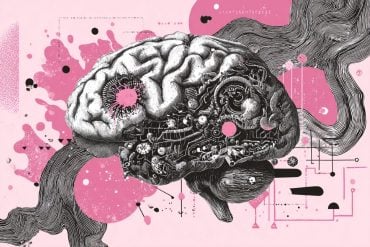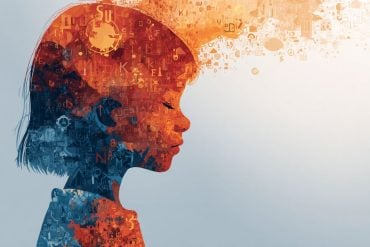Summary: Researchers report increases in cortical responses to infants’ faces between the prenatal to postnatal period is associated with more positive relationships with the baby after birth.
Source: SRCD.
The transition to motherhood triggers changes in mothers’ brain structure that may facilitate bonding with their infants. While many studies have focused on the postpartum period, researchers have not examined whether changes in the maternal cortex during pregnancy are associated with postnatal bonding. A new study examined whether pregnancy changes mothers’ neural sensitivity to infants’ facial cues, and whether such changes affect mother-infant bonding. The study found that mothers who showed increased brain activity in response to infants’ facial cues from pregnancy to motherhood reported stronger bonds with their infants after birth than mothers who didn’t show such increases.
The findings, from researchers at the University of Toronto and Liverpool Hope University, are published in Child Development, a journal of the Society for Research in Child Development.
“Our findings support the idea that, in the brain, responses to infants’ cues change over the course of pregnancy and early motherhood, with some mothers showing more marked changes than others,” explains David Haley, professor of psychology at the University of Toronto, who led the study. “This variation in turn is associated with mothers’ reports of their emotional bonds with their babies.”
The early relationship between mothers and infants is widely seen as vital to children’s development. Mothers’ ties with their babies are key to the development of this relationship, and a strong bond is critical for optimal development. Developing this bond is not instantaneous, but occurs as part of a process that often starts in pregnancy and continues over the months after birth. The importance of forming close bonds has been studied, but little is known about how this bond may start developing prenatally.
Researchers surveyed 39 pregnant women ages 22 to 39 from a range of races and ethnicities from the greater Toronto area; most of the women were married and had a college or graduate degree. The women visited the lab twice, once in the third trimester of pregnancy and once three to five months after they had given birth. At both visits, the women took part in a face-processing task during which their brain activity was measured by an EEG (which measures electrical activity in the brain); in the task, women viewed four blocks of 40 faces of happy and sad infants and adults. At both visits, the women reported any symptoms of depression and anxiety, and at the postnatal visit, they reported on how they were bonding with their newborns. In this way, the researchers determined changes in brain activity from the prenatal to the postnatal period, and they examined associations between mothers’ individual differences in this brain activity change with the mothers’ descriptions of their bonds with their babies.
The study found that increases in cortical responses to infants’ faces from the prenatal to the postnatal period in individual mothers were associated with more positive relationships with the baby (as reported by the mothers) after birth. The researchers found that the observed cortical changes reflected automatic attention processes rather than deliberate control processes. They also found that the observed cortical changes could not be attributed to face-specific processes used to perceive the structural features of an infant’s face.

Taken together, the findings suggest that the transition from pregnancy to motherhood is a period of plasticity in the cortical area of the brain, as well as one of cortical reorganization, which manifests in some parents as greater attention to infants’ faces and better mother-infant bonding.
This study is limited by its size and the fact that bonding was measured according to mothers’ reports, not from observations of the mother-infant interaction. In addition, the researchers did not determine the direction of the findings, that is, whether the mother-infant relationship influenced neural change or neural change influenced the close relationship.
“The next steps in our research are to examine how emotional and cognitive networks in the brain communicate, and whether changes in neural connectivity between these networks are related to how parents understand and respond to the emotional signals of their infants,” said Joanna Dudek, a graduate student at the University of Toronto, who coauthored the study.
Funding: The study was funded by the Natural Sciences and Engineering Research Council of Canada.
Source: Jessica Efstathiou – SRCD
Publisher: Organized by NeuroscienceNews.com.
Image Source: NeuroscienceNews.com image is in the public domain.
Original Research: Abstract for “Changes in Cortical Sensitivity to Infant Facial Cues From Pregnancy to Motherhood Predict Mother–Infant Bonding” by Joanna Dudek Tyler Colasante, Antonio Zuffianò, and David W. Haley in Child Development. Published December 4 2018.
doi:10.1111/cdev.13182
[cbtabs][cbtab title=”MLA”]SRCD”Mothers Whose Responses to Infants’ Facial Cues Increase Reports Stronger Bonds with Babies .” NeuroscienceNews. NeuroscienceNews, 4 December 2018.
<https://neurosciencenews.com/baby-bond-facial-cues-120205 />.[/cbtab][cbtab title=”APA”]SRCD(2018, December 4). Mothers Whose Responses to Infants’ Facial Cues Increase Reports Stronger Bonds with Babies . NeuroscienceNews. Retrieved December 4, 2018 from https://neurosciencenews.com/baby-bond-facial-cues-120205 /[/cbtab][cbtab title=”Chicago”]SRCD”Mothers Whose Responses to Infants’ Facial Cues Increase Reports Stronger Bonds with Babies .” https://neurosciencenews.com/baby-bond-facial-cues-120205 / (accessed December 4, 2018).[/cbtab][/cbtabs]
Abstract
Changes in Cortical Sensitivity to Infant Facial Cues From Pregnancy to Motherhood Predict Mother–Infant Bonding
The transition to motherhood triggers changes in human brain structure that may facilitate mother–infant bonding. Although much research on maternal cortical responses to infant faces has focused on the postpartum period, no previous study has examined whether longitudinal functional changes in the maternal cortex during pregnancy and postpartum are associated with mother–infant bonding. Using electroencephalography, prenatal to postnatal changes in cortical sensitivity (P1, P2, late positive potential, N170 event‐related potentials) to infant and adult faces were examined in relation to reported mother–infant bonding in 40 mothers (Mage = 30.5 years). Prenatal to postnatal increases in P1 and P2 responses to infant faces predicted stronger bonding. Findings suggest that cortical changes in attention allocation rather than in face‐specific encoding enhance bonding.






